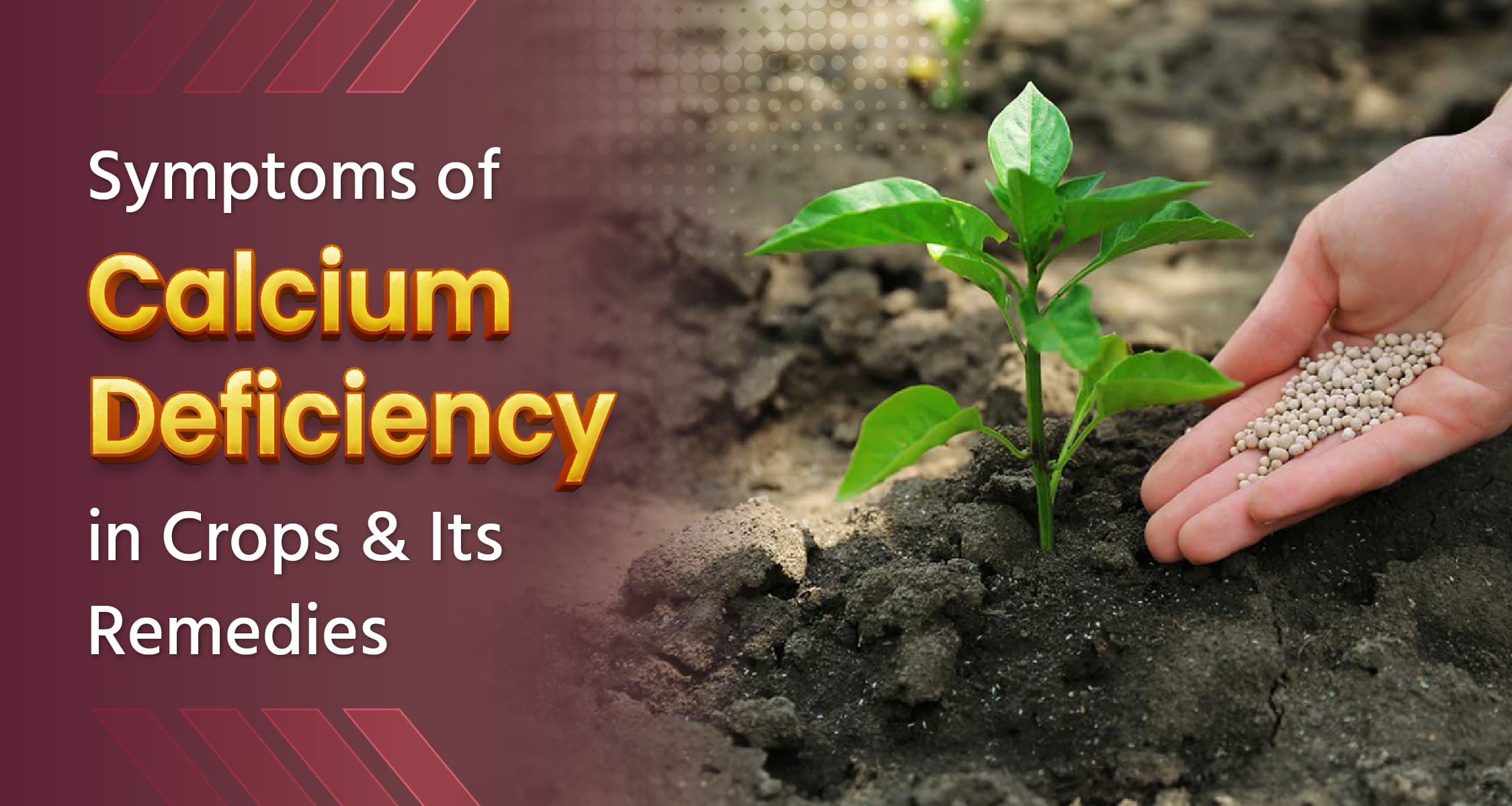Reasons and Symptoms of Calcium Deficiency in Crops and Solutions

Calcium is an essential nutrient for plant growth, strengthening their cell walls and keeping them healthy. It activates enzymes that help in the proper utilization of nutrients in plants and ensures the flow of water. When there is a deficiency of calcium in plants, the growth of roots and new leaves halts, leading to weakened plants. This deficiency causes leaves to curl, rot, and results in smaller, tasteless fruits. Therefore, maintaining the right amount of calcium is crucial for healthy plant growth and quality production. This can be achieved through appropriate fertilizers and proper farming techniques. In this article, we will discuss in detail the causes, symptoms, effects, and solutions for calcium deficiency in crops.
Reasons and Symptoms of Calcium Deficiency and Solutions
Causes of Calcium Deficiency in Crops
- Soil pH: If the soil pH is above 7.5 or below 5.5, the availability of calcium decreases.
- Water Content in Soil: When there is either excessive or insufficient water, calcium absorption from the soil is not efficient.
- Excessive Nitrogen Use: When nitrogen levels in the soil are too high, it disrupts the balance of calcium in the plants.
- Sandy and Light Soil: These types of soil have lower calcium absorption.
- Repeated Cultivation in the Same Area: Continuously farming in the same area depletes calcium in the soil, as plants consistently absorb it.
Symptoms of Calcium Deficiency
- Plants with calcium deficiency exhibit curled buds, and there are issues with the edges of leaves curling downwards and tips drooping.
- This condition affects the overall growth of the plants, as calcium is essential for the strength of cell walls and the structure of leaves.
- Calcium deficiency leads to weak and unhealthy plants.
Symptoms of Calcium Toxicity
- Excess calcium affects the absorption of magnesium and potassium, resulting in symptoms of deficiency for these nutrients in plants.
- An excess of calcium halts the growth of new leaves and branches.
- Leaves may develop burn-like spots that are white or yellow in color.
Solutions for Calcium Deficiency
- Test the Soil: Determine the calcium level in your field by testing the soil. Additionally, the soil pH level should be between 6.5 and 7.5. Conduct regular soil tests and add lime as needed.
- Adopt Crop Rotation: Follow a crop rotation plan to maintain the balance of nutrients in the soil.
- Use Green Manure: Utilize green manure, straw, or decomposed compost to maintain soil structure and moisture, which can help reduce calcium deficiency.
- Choose Calcium-Tolerant Crops: Select crops that can tolerate calcium deficiency.
- Regular Use of Organic Matter: Regularly incorporate organic matter to maintain soil structure and nutrient levels.
- Irrigation Management: Irrigate regularly but avoid overwatering, as it can affect the availability of calcium.
- Limestone: Limestone balances soil pH and addresses calcium deficiency. It is used to improve soil health and enhance plant growth.
- Dolomitic Lime: Dolomitic lime provides calcium as well as magnesium, which is beneficial for plant growth. It also helps improve soil structure.
- Calcium Nitrate [Ca(NO3)2]: Calcium nitrate contains 15.5% nitrogen (N) and 18.5% calcium (Ca). Mix 500 grams in 200 liters of water and spray it on crops. This fertilizer is quickly absorbed by crops and aids in the development of new leaves and roots.
- Calcium Nitrate with Boron: This fertilizer contains 14.5% nitrogen (N), 17% calcium (Ca), and 0.3% boron. Use it at a rate of 5 grams per liter for foliar spraying. It helps improve plant growth and health.
What measures do you take to address calcium deficiency in crops? Be sure to share your experiences and answers in the comments, and follow the 'Krishi Gyan' channel for more interesting information related to farming. If you liked this post, please give it a like and share it with your fellow farmers.
Frequently Asked Questions (FAQs)
Q: How can calcium be supplemented in the field?
A: To supplement calcium in the field, use calcium-rich fertilizers such as calcium nitrate and limestone. Organic options include eggshells and biochar. It is essential to maintain the soil pH between 6.5 and 7.5, so conduct regular tests and add lime as needed. Ensure proper irrigation; avoid overwatering. Using green manure helps improve soil structure.
Q: What are the three signs of calcium deficiency?
A: The main signs of calcium deficiency include: curling or distorted new leaves that do not open properly; browning of leaf edges, which turn yellow before becoming brown; and weak roots that hinder growth. These symptoms affect the quality and productivity of the plants.
Q: What is calcium nitrate fertilizer?
A: Calcium nitrate is a fast-absorbing fertilizer that contains both calcium and nitrogen. It supplies essential nutrients for plants and aids in the development of new leaves and roots. It can be applied through irrigation or foliar spray, helping to alleviate calcium deficiency in plants.
Please login to continue

Get free advice from a crop doctor
